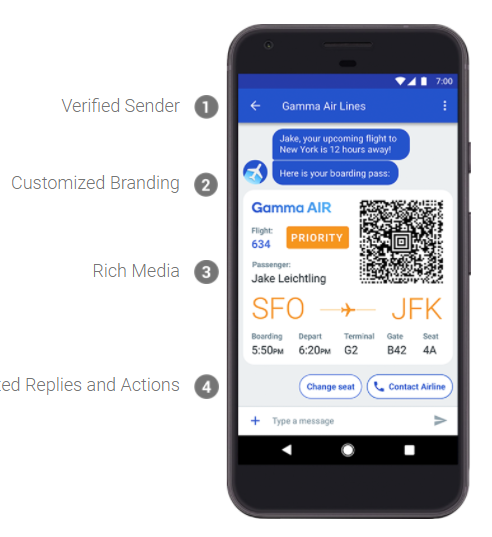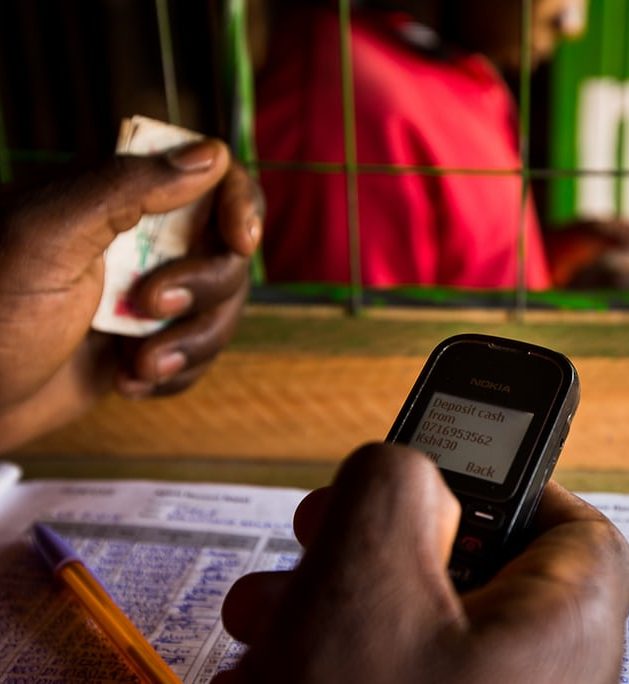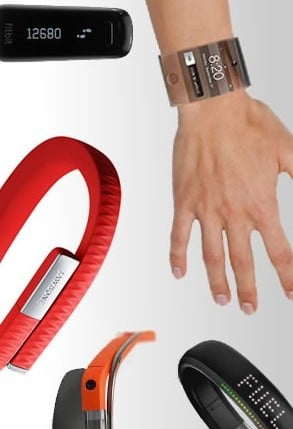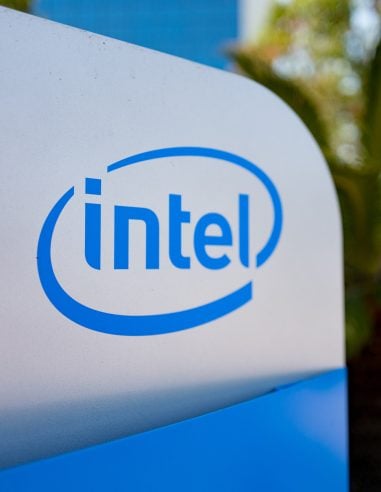Find out the week’s top mobile stories from around the world.
This week.. Google says 40+ carriers and device manufacturers now use its platform for RCS, The low-cost mini satellites bringing mobile to the world, Zimbabwe and Kenya lead the way in Africa’s dash from cash + what to expect from all the biggest tech companies at Mobile World Congress this year…

Google says more than 40 carriers and device manufacturers now use its platform for RCS, the next generation of SMS
Tech Crunch
Rich Communication Services (RCS) is basically the standard for the next generation of text messaging, with apps like WhatsApp, Facebook Messenger, LINE and others now offering features that go far beyond the standard SMS-based messaging apps that tend to ship with your phone — unless, of course, you are an Apple and iMessage user.
As Google announced today, more than 40 carriers and device manufacturers now use its RCS platform (out of a total of about 60 that currently support it). That’s up from the 27 Google cited last year.
Read more…
The low-cost mini satellites bringing mobile to the world
BBC
Large chunks of the planet are still of out of reach of mobile phone signals – that’s about four billion people without access to digital communications. But this could change thanks to shrinking satellite sizes and costs.
Lower-cost, space-based mobile phone services will soon be a reality thanks to one firm’s fleet of nano-satellites that will bounce your voice or text signal from one spacecraft to the next and finally down to the person you’re calling.
“People were thinking of using nano-satellites for earth imagery but nobody had thought of using them for voice or text communications,” says Israeli former fighter pilot Meir Moalem, the chief executive of Sky and Space Global (SAS).
Read more…
Study reveals strength of mobile video ads
Advanced Television
Research from marketing science academic Professor Karen Nelson-Field has uncovered new insights into how and why video advertising works for brands when viewed on mobile devices.
The ‘mobile edition’ of Professor Nelson-Field’s ongoing Benchmark Series, commissioned by Australian commercial TV advisory resource ThinkTV, makes a number of significant findings that are designed to help advertisers and their agencies get the best out of video advertising.
Professor Nelson-Field used bespoke AI machine-learning technology and eye-tracking software to minimise human bias in her team’s data gathering.
Read more…
Android P will stop apps from silently using your phone’s camera and mic
ZDnet
The next version of Google’s mobile operating system, Android P, looks set include new privacy protections that prevent apps from abusing a phone’s camera and microphone.
XDA-Developers has spotted two commits for Android P in the Android Open Source Project (AOSP) that are intended to constrain apps idling in the background from accessing sensitive features on a device, such as the microphone and camera.
Once an app has run in the background for a certain amount of time, it should not be able to use the camera, AOSP developers note.
Read more…
Zimbabwe and Kenya lead the way in Africa’s dash from cash
Guardian
“Drunks love paying by M-Pesa,” the owner of a bar in a low-income area of Kenya’s capital, Nairobi, explained drily. “It’s easy to get conned when you have cash.”
The well-known mobile money platform may not choose to commandeer this observation as a marketing slogan, but it does capture some of the reasons why M-Pesa is starting to shift Kenyans away from using cash.
M-Pesa – which references the Swahili word for money – offers efficiency and traceability. And if you lose your phone at the end of the night, no one else can access your funds.
Read more…
Google steps up global fight for digital wallet as China dominates mobile payments
South China Morning Post
To get a sense of how pervasive mobile payments have become in China, consider that on the eve of this year’s Spring Festival, 668 million people on Tencent Holding’s WeChat app sent virtual hongbao – digital red packets containing money – to friends and family as part of their well wishes for the new year.
Now western tech giants are accelerating efforts to tap into the market, with Google this week launching Google Pay in a move that rebrands and unifies its previous mobile payment apps as it rolls out new features and plays catch-up with Chinese payment services like WeChat Pay and Alipay.
Read more…
Brazil operators tipped for regulatory boost
Mobile World Live
ule changes in Brazil could allow converged operators to abandon underused assets to free-up cash to invest in improving 4G, Reutersreported.
Under current regulations the country’s operators are required to support loss-making fixed assets in a number of areas of Brazil. However, regulator Anatel is currently mulling a rule change to remove some obligations.
Should Anatel decide to amend laws Reuters’ sources said operators would make significant savings, which could then be used to invest in other infrastructure including improvements in 4G.
The sources noted Oi and Telefonica’s Vivo unit were the two companies with the largest underused fixed liabilities, with both forced to maintain rarely accessed public telephones and retain abandoned real estate.
Read more…
Breakthrough for wearables predicted, yet again
Telecoms.com
Wearables have been a promise for the technology industry ever since science fiction movies showcased wonderful uses for the gear, but time and time again, we’ve been disappointed. That said, CCS Insight think it’s about to kick off.
The research from CCS forecasts 71 million smartwatches will be sold in 2018, then doubling to 140 million in 2022. The wearables space on the whole is expected to grow 20% year-on-year through to 2022, becoming a $29 billion market with 243 million unit sales. Predicting the wearables boom has been a perilous game in recent years, but the general public is becoming more in-tune with future tech, just look at the growth of smart speakers, maybe this is the time for wearables, with smart watches leading the charge.
“Apple has become the market leader for smartwatches. Sales volumes have exceeded expectations and the introduction of a cellular-enabled model has pushed up the value of its sales, which we estimate at $5 billion in 2017,” said George Jijiashvili of CCS Insight.
Read more…
Intel lays out its 5G plans ahead of Mobile World Congress
Tech Crunch
The big story at last year’s Mobile World Congress was 5G. This time out, however, we can expect a lot around 5G. And as for next year’s show? Well, then we’ll finally start talking about some 5G. Mobile infrastructure is a hard thing to make sexy, but it is, indeed, the future, and you can anticipate a lot more talk around the technology that will power the next generation of mobile devices at next week’s big show in Barcelona.
We’re still some days off from the actual event, and already Intel’s showing off a little of what they’ll be talking about at MWC. Perhaps somewhat ironically, the company will be using the world’s biggest mobile show to show some of the work it’s been doing on the PC side of the spectrum — but then, this is Intel, after all.
The chip maker will be using the event to debut some early demos of its forthcoming 5G-enabled two-in-one devices. Not a lot in the way of specifics around the devices at the moment, but Intel’s been partnering with most of the biggest names in the Windows device space, including Dell, HP, Lenovo and, naturally, Microsoft, with a goal of bringing products to market by the end of 2019.
Read more…
Here’s what to expect from all the biggest tech companies at Mobile World Congress this year
Business Insider
Mobile World Congress (MWC) starts on February 26 in Barcelona and runs through to March 1.
Last year’s event started excitedly with Greenpeace protestors scaling the building outside Samsung’s press conference. IBM’s Watson created artworks, and we saw connected dogs and seals, and loads of VR.
But people really are at MWC for the phones. And this year, there’s a lot of interest in how the big manufacturers are going to answer the challenge put up by Apple’s iPhone X and Google’s Pixel 2.
There isn’t much detail that hasn’t already leaked on the new Galaxy phones. But if you haven’t heard, Samsung is said to have ditched early plans for phones with larger screen-to-body ratios and will stick with the S8 and S8+ housing.














